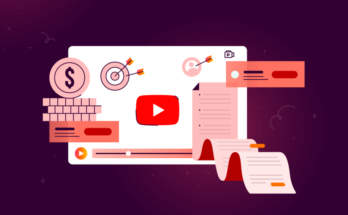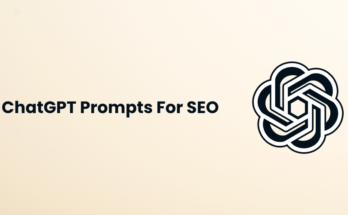In the digital age, where content is king, mastering SEO can be the game-changer you need to elevate your online presence. Whether you’re a seasoned digital marketer, a budding content creator, or an SEO enthusiast, understanding how to optimize your content for maximum impact is crucial. This blog post will guide you through the essential strategies and techniques to make your content not only engaging but also highly visible on search engines. Let’s jump into the world of SEO content mastery!
Understanding SEO and Its Importance
SEO, or Search Engine Optimization, is the practice of optimizing your web content to rank higher in search engine results pages (SERPs). This is important because higher rankings typically lead to increased traffic, which can result in more conversions and revenue. SEO is not just about stuffing keywords into your content; it’s a comprehensive approach that involves keyword research, on-page and off-page optimization, and understanding user intent.
One of the key aspects of SEO is its ability to bring organic traffic to your website. Organic traffic is highly valuable because it consists of users who are actively searching for information related to your business or niche. This means they are more likely to engage with your content and convert into customers. Additionally, high-ranking content builds credibility and authority, establishing you as a leader in your field.
SEO is constantly evolving, with search engines updating their algorithms to provide the best user experience. Staying updated with these changes and adapting your strategies accordingly is vital for long-term success. In the following sections, we’ll explore the various components of SEO content mastery.
Keyword Research and Selection
Keywords are the foundation of SEO. They are the terms and phrases that users type into search engines when looking for information. Effective keyword research involves identifying the right keywords that have high search volume and low competition. Tools like Google Keyword Planner, SEMrush, and Ahrefs can help you find these keywords.
Once you have your list of keywords, it’s important to incorporate them naturally into your content. This includes the title, headings, meta descriptions, and throughout the body of the text. However, avoid keyword stuffing, as this can negatively impact your rankings and user experience. Aim for a keyword density of 1-2% and ensure the content reads naturally.
Long-tail keywords, which are longer and more specific phrases, are also valuable. They may have lower search volumes, but they often have higher conversion rates because they target more specific queries. Including a mix of short-tail and long-tail keywords in your content can help you reach a broader audience.
Crafting Engaging and SEO-Friendly Titles
Your title is the first thing users see in search results, and it plays a significant role in determining whether they click on your link. An effective title is both informative and compelling, incorporating your primary keyword naturally. It should give users a clear idea of what to expect from the content while sparking their curiosity.
Using power words like “ultimate,” “guide,” “tips,” and “strategies” can make your title more appealing. Additionally, keeping your title under 60 characters ensures it displays fully in search results. For example, instead of “SEO Content Mastery,” a more engaging title could be “The Ultimate Guide to SEO Content Mastery for Maximum Impact.”
Including numbers in your title can also boost click-through rates. Lists and step-by-step guides are popular among readers because they promise easy-to-digest information. A title like “10 Strategies for SEO Content Mastery” is likely to attract more clicks than a generic one.
Writing High-Quality and Relevant Content
Content quality is paramount in SEO. Search engines prioritize content that is informative, well-researched, and relevant to the user’s query. High-quality content not only improves your rankings but also enhances user engagement and retention. Aim to provide value to your readers by addressing their pain points, answering their questions, and offering actionable insights.
One way to ensure your content is high-quality is by conducting thorough research and using credible sources. Cite statistics, studies, and expert opinions to back up your claims. This not only adds credibility but also enriches your content, making it more informative and trustworthy.
Structure your content logically, with clear headings and subheadings for easy readability. Use short paragraphs, bullet points, and images to break up the text and enhance the user experience. Internal linking to other relevant articles on your website can also help keep readers engaged and improve your site’s SEO.
Optimizing Meta Descriptions and Tags
Meta descriptions and tags play a crucial role in SEO, providing search engines and users with a summary of your content. A well-crafted meta description can enhance your click-through rate by enticing users to click on your link. It should be concise, include the primary keyword, and clearly convey the value of your content.
Keep your meta descriptions under 160 characters to ensure they display fully in search results. Use action-oriented language to encourage clicks, such as “Discover,” “Learn,” or “Find out.” For example, a meta description for this article could be, “Discover how to master SEO content with our ultimate guide, packed with tips and strategies for digital marketers and content creators.”
Title tags, which are the titles that appear in search results and browser tabs, should also be optimized with your primary keyword. They should accurately reflect the content of the page and be compelling enough to attract clicks. Keep them under 60 characters to ensure they display properly.
Utilizing Headers and Subheaders for Structure
Headers and subheaders (H2, H3, etc.) are essential for structuring your content and making it easily scannable for readers. They also provide search engines with a clear outline of your content’s hierarchy and main points. Including relevant keywords in your headers can further boost your SEO.
Each section of your content should have a clear header that indicates its focus. Subheaders can be used to break down complex topics into smaller, manageable sections. This not only improves readability but also helps users quickly find the information they are looking for.
Avoid using excessively long or vague headers. Keep them concise and to the point, ensuring they accurately reflect the content that follows. For example, instead of “Some Things to Consider About SEO,” use a more specific header like “Key Factors to Consider in SEO.”
Incorporating Internal and External Links
Linking is a powerful SEO strategy that can enhance your content’s credibility and authority. Internal links connect your current article to other relevant pages on your website, helping users discover more of your content and improving site navigation. They also distribute page authority across your site, boosting overall SEO.
External links, on the other hand, connect your content to reputable sources, adding credibility and providing additional value to your readers. When linking externally, ensure the sources are authoritative and relevant to your topic. This not only enhances the user experience but also signals to search engines that your content is well-researched.
Use anchor text that is descriptive and relevant to the linked content. Avoid generic phrases like “click here” and instead use keywords that give users a clear idea of what to expect. For example, “Learn more about keyword research” is more informative than “click here for more.”
Enhancing Content with Visual Elements
Visual elements like images, videos, infographics, and charts can significantly enhance your content, making it more engaging and easier to understand. They break up large chunks of text, provide visual explanations, and can even improve your SEO when optimized correctly.
Use high-quality, relevant images that complement your content. Include descriptive alt text for each image, incorporating your primary keyword when appropriate. This not only improves accessibility for users with disabilities but also helps search engines understand the context of your images.
Videos and infographics can provide additional value by presenting information in a more dynamic and digestible format. Embedding videos from platforms like YouTube can also increase the time users spend on your page, which is a positive signal to search engines.
Ensuring Mobile-Friendliness
With the majority of internet users accessing content via mobile devices, ensuring your content is mobile-friendly is crucial. Mobile optimization involves making your website and content easily accessible and readable on smaller screens, which can significantly impact your SEO and user experience.
Use a responsive design that adjusts to different screen sizes and orientations. Ensure your text is readable without zooming in, and that buttons and links are easily tappable. Tools like Google’s Mobile-Friendly Test can help you assess and improve your site’s mobile performance.
Loading speed is another critical factor for mobile users. Compress images, minimize code, and leverage browser caching to improve your site’s loading time. A faster site not only enhances user experience but also positively impacts your search rankings.
Engaging Your Audience with Interactive Content
Interactive content, such as quizzes, polls, and calculators, can significantly boost user engagement and keep visitors on your site longer. This type of content encourages active participation, making the user experience more enjoyable and memorable.
Quizzes and polls related to your industry or niche can provide valuable insights into your audience’s preferences and behaviors. They also encourage social sharing, increasing your content’s reach and visibility. For example, a quiz titled “Test Your SEO Knowledge” can attract and engage SEO enthusiasts.
Interactive infographics and calculators can simplify complex information and provide personalized insights. These tools not only enhance the user experience but also position your brand as a valuable resource. Implementing interactive content can differentiate you from competitors and foster a deeper connection with your audience.
Monitoring and Analyzing Performance
To ensure your SEO efforts are effective, it’s important to regularly monitor and analyze your content’s performance. Tools like Google Analytics, Google Search Console, and SEMrush provide valuable data on your site’s traffic, user behavior, and search rankings.
Track key metrics such as organic traffic, bounce rate, average session duration, and conversion rate. Analyzing this data can help you identify what’s working and what’s not, allowing you to make informed decisions and adjustments to your strategy.
Conduct regular SEO audits to identify and fix any issues that may be affecting your site’s performance. This includes broken links, duplicate content, and slow loading times. Staying proactive and continuously optimizing your content will help maintain and improve your search rankings.
Keeping Up with SEO Trends and Updates
SEO is a constantly evolving field, with search engines regularly updating their algorithms to improve user experience. Staying informed about the latest trends and updates is crucial for maintaining and enhancing your SEO strategy.
Follow reputable SEO blogs, attend industry conferences, and participate in online forums and communities. Engaging with other SEO professionals can provide valuable insights and keep you updated on best practices and emerging trends.
Adapting to algorithm updates and incorporating new strategies into your content can give you a competitive edge. For example, voice search optimization and artificial intelligence are becoming increasingly important in SEO. Staying ahead of the curve will help you maintain your rankings and continue to attract organic traffic.
Conclusion
Mastering SEO content is essential for digital marketers, content creators, and SEO enthusiasts looking to maximize their online impact. By understanding the fundamentals of SEO, conducting thorough keyword research, creating high-quality content, and staying updated with industry trends, you can significantly enhance your site’s visibility and performance.
Remember, SEO is not a one-time effort but an ongoing process. Continuously monitor and optimize your content, engage with your audience, and adapt to changes in the digital landscape. By doing so, you’ll not only improve your search rankings but also establish yourself as a credible and authoritative source in your field.
Are you ready to elevate your SEO game? Start implementing these strategies today and watch your online presence soar!




